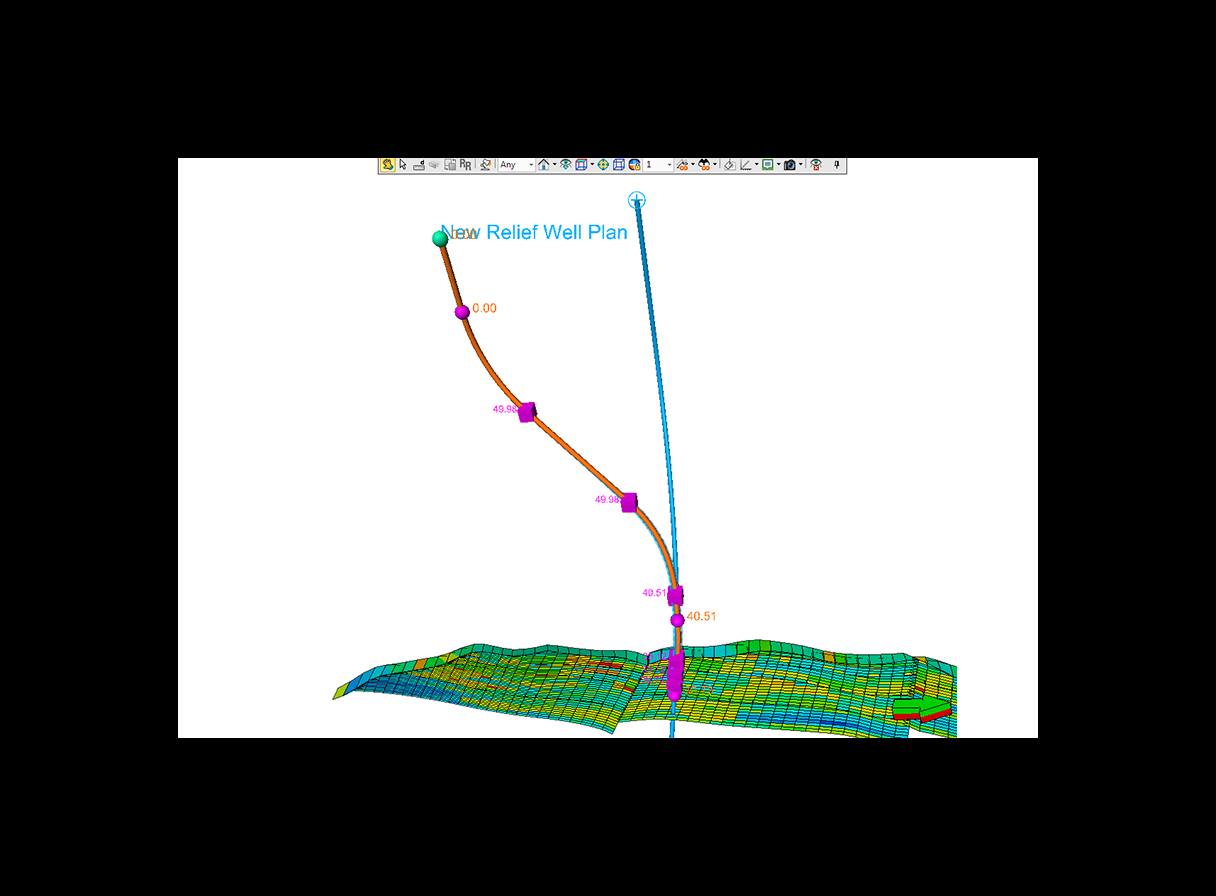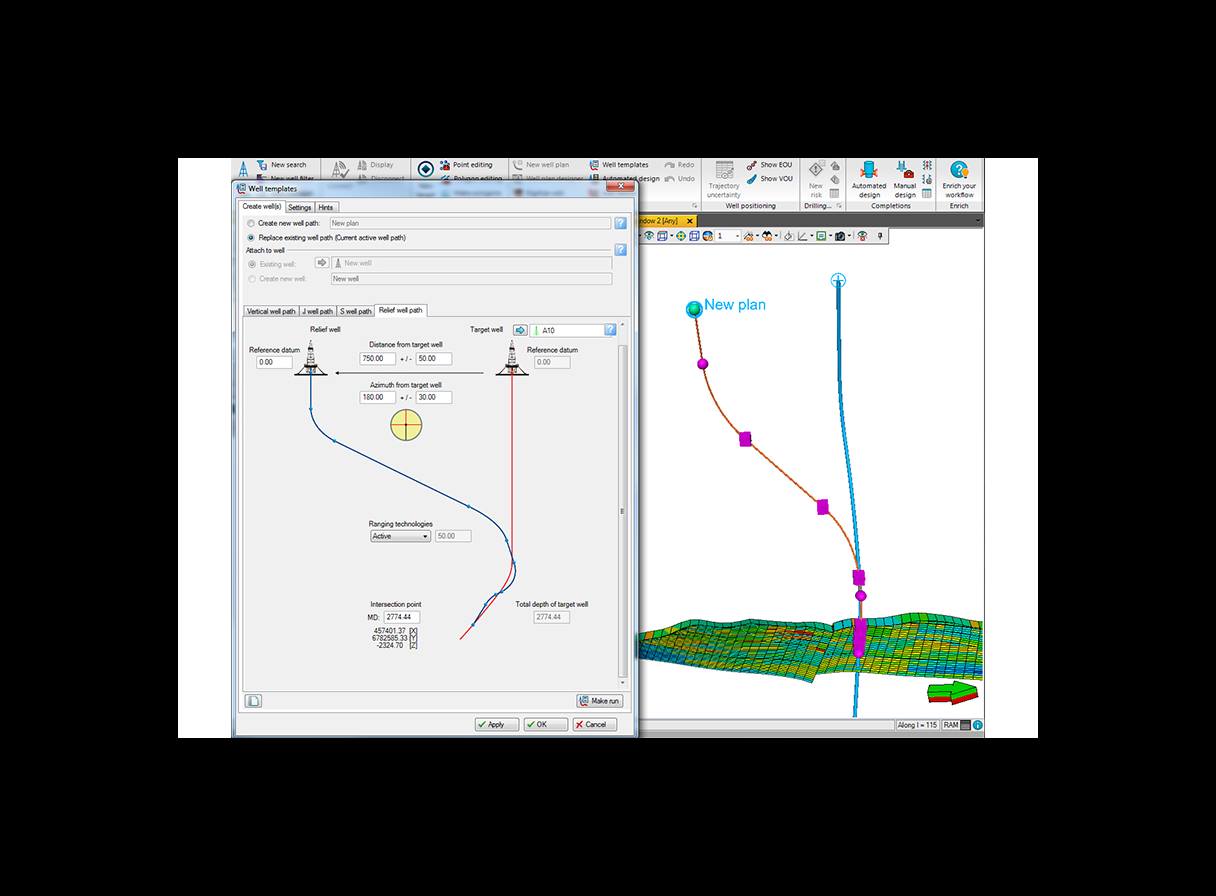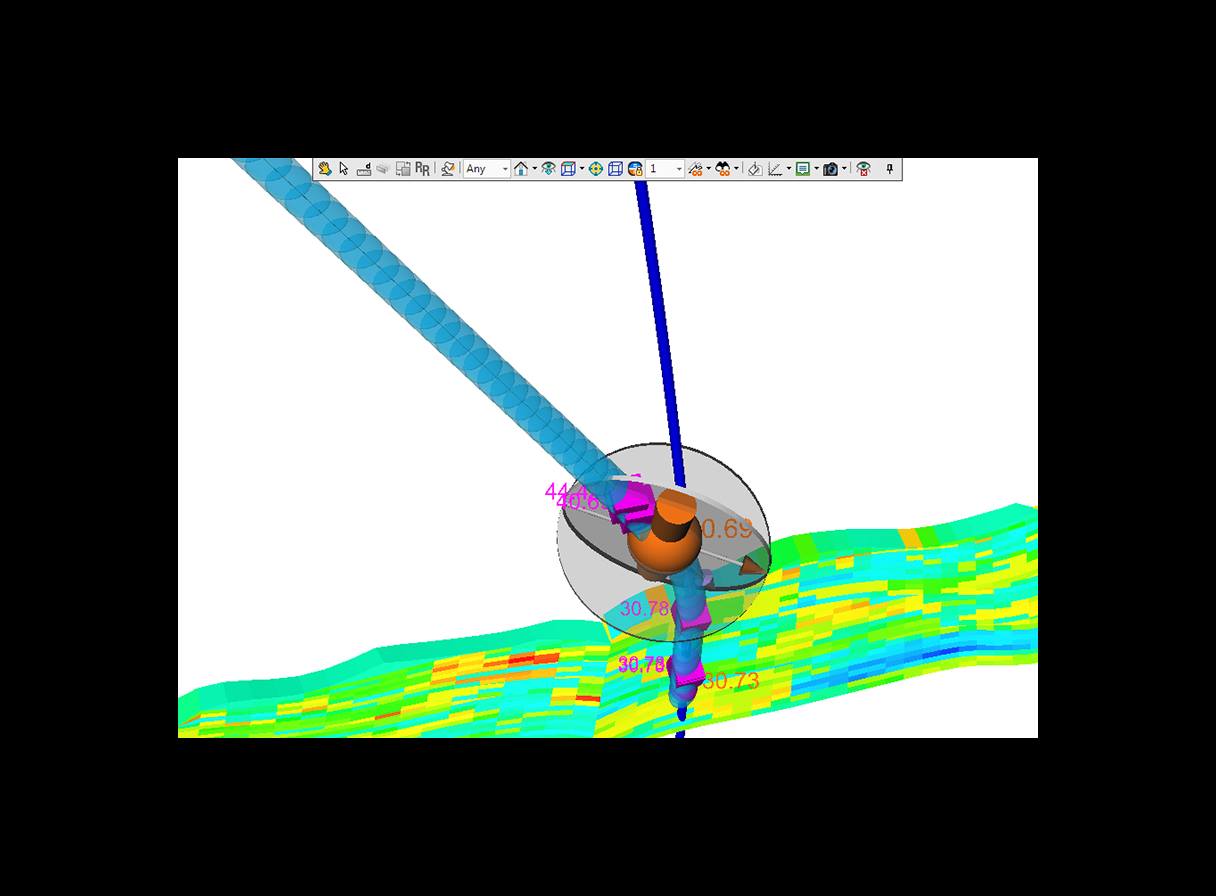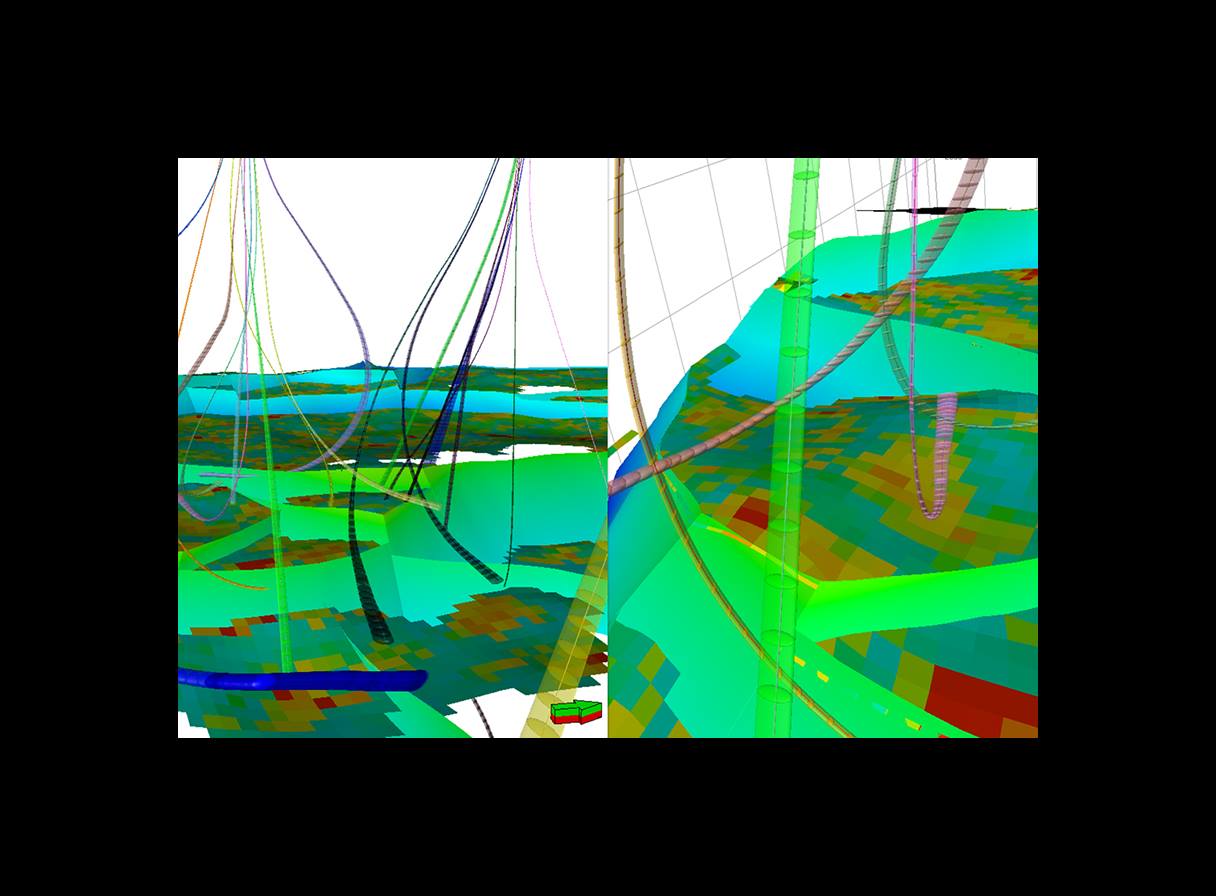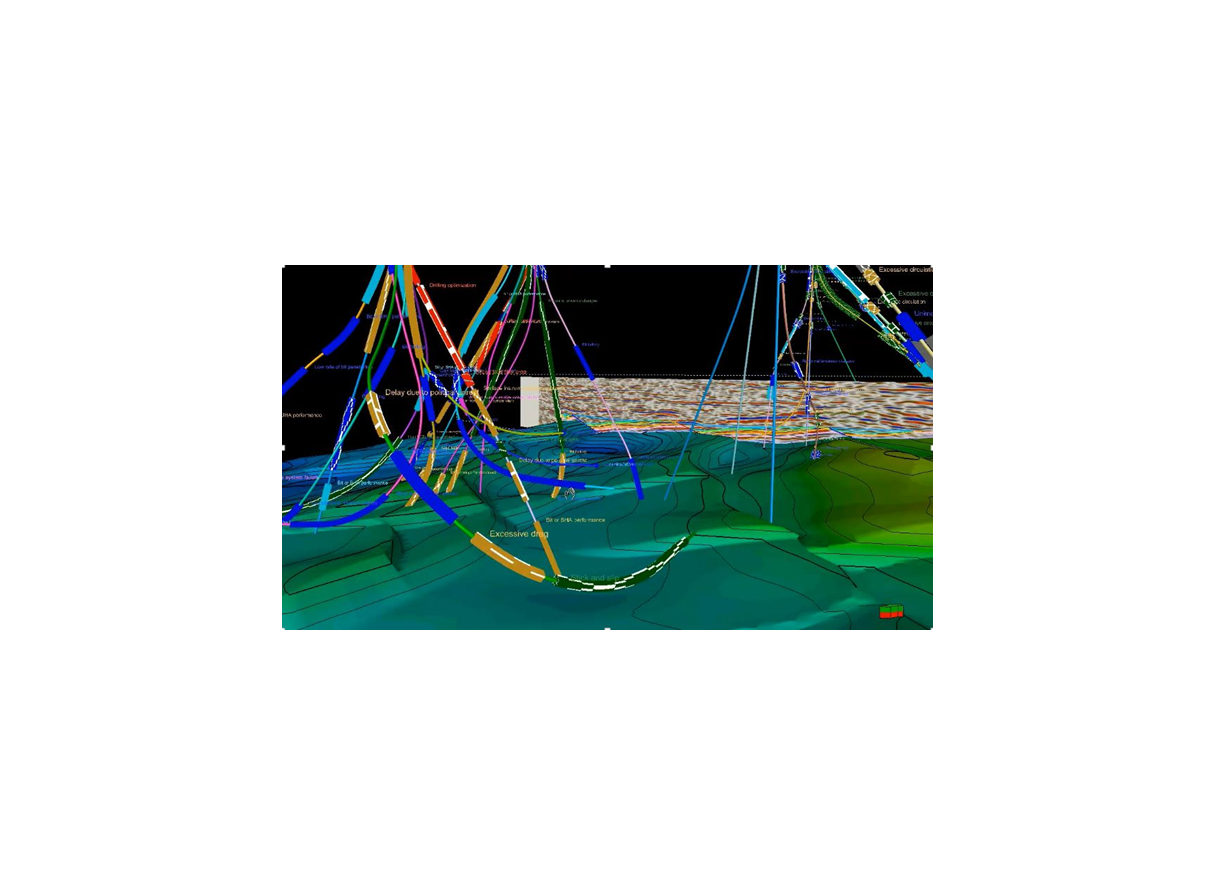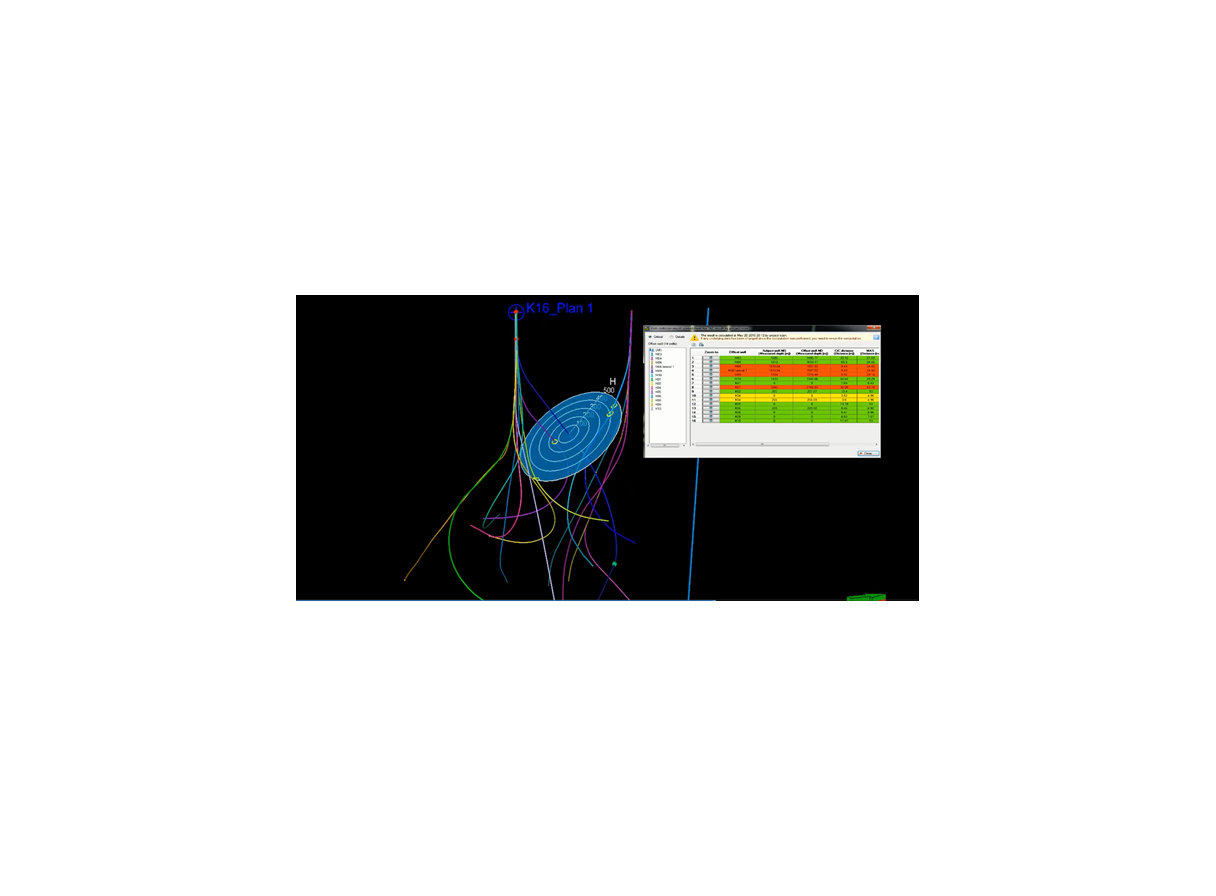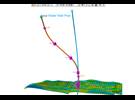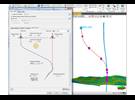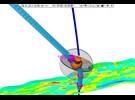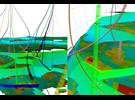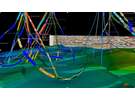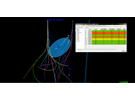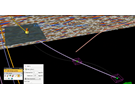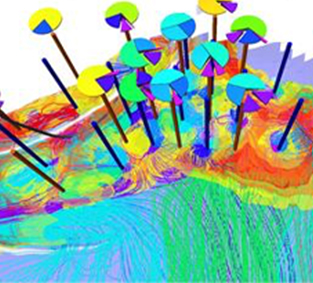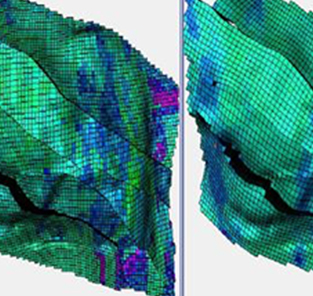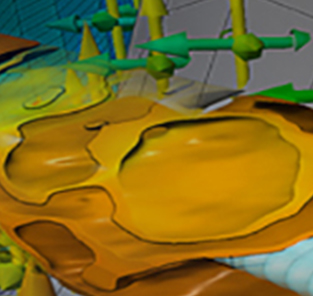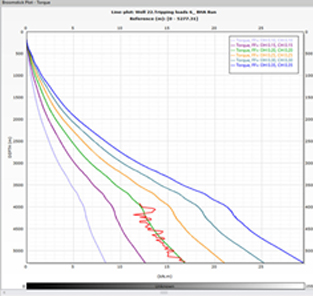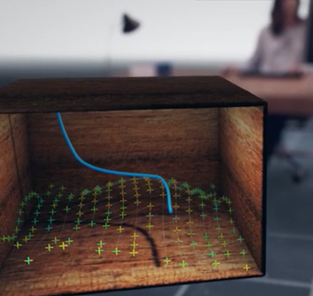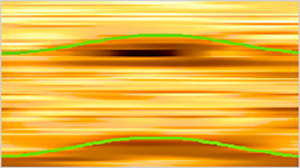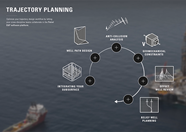Integrated trajectory workflow in 3D earth model
The well path design and well positioning workflows use industry-standard engines to enable you to quickly design and validate all well trajectories, drillable wells, sidetracks, and multilaterals, as well as perform drilling target and anticollision analysis—all in the context of your 3D earth model.
Once the wells are planned, attributes can be adjusted for cost, directional complexity, and platform locations, while ensuring maximum reservoir contact. All changes are viewable in geological context within a 3D window.
The well positioning workflow increases confidence in anticollision analysis by visualizing critical results within a 2D or 3D space: this is especially useful in congested offshore or land development environments. Calculating the no-go zone for each offset well steps down each ellipsoid of uncertainty of the offset well trajectory and computes the perpendicular cross section as well as the minimum allowable separation distance for each direction. The 3D no-go space is constructed by connecting all of the no-go cross sections on each offset well, from wellhead to TD.
Project or window anticollision scans can be run interactively while planning or drilling. Collision risk levels are highlighted in a window—high-risk level displayed in red, low-risk level in green—providing a quick indication of the success of the anticollision scenario.
Integrated geomechanics
The Mud Weight Predictor (MWP) plug-in for the Petrel platform provides advanced wellbore stability postprocessing for your geomechanical models. The purpose is to assist in choosing the density of drilling mud to keep the well mechanically stable and avoid influx of fluids, thus assessing drilling risks on the basis of a geomechanical model.
The workflows incorporate heterogeneous distribution of the mechanical properties and stresses from a geomechanical model and convert this information into mud-weight window limits and width for a given well direction. This enables you to choose the most stable path and, depending on the width of the mud-weight window, safe and unsafe zones for drilling can be identified, which allows well design to minimize drilling problems and mitigate risks.
Conduct offset well analysis
Offset performance can be analyzed and optimal drilling parameters identified for a planned well in a given formation or section by predicting rates of penetration on the proposed trajectory. Detailed data analysis is facilitated by crossplots, montages, and comprehensive data filtering tools, for example, by well, bit, depth, or other log data.
For risk management, a risk catalog can be constructed that combines all of the reservoir, borehole geomechanics, and drilling information, such as lessons learned, best practices, and risks encountered in offset wells. Events can be used to calibrate your models, which are then correlated to geology and visualized in both the 3D and well section windows, then migrated to a planned well so risk mitigation planning can be initiated and incorporated into the drilling program.
Perform relief well planning
With the Petrel trajectory planning module, the technology for validation of relief well plans is accessible to the drilling engineer early in the trajectory design stage. This shortens the iteration process by enabling a full range of parameter uncertainties to be used when planning and testing the well. Thus, rapid evaluation of key uncertainty parameters is possible early in the well planning process—as parameters are confirmed or as new data arrives, the simulations can be quickly updated.
Work in a real-time environment
The ultimate objective is to reach geological targets safely. The Petrel trajectory planning module helps achieve this by streaming depth-indexed data while drilling and comparing planned versus actual well paths in real time to immediately determine if there is a risk of missing a target.
Applications
- Well path design
- Well positioning for anticollision and driller target analysis
- Calculation of stable drilling direction and resulting mud-weight cube
- Integration of offset experience
- Evaluation of relief well geometries
- Prediction of requirements to kill well
Benefits
- Ensure objectives are met by designing well paths entirely within a shared earth model
- Design optimal well paths and reduce cycle time
- Ensure maximum reservoir contact using best-fit workflows
- Understand challenges facing new well paths by visualizing information in 2D and 3D windows
- Recalculate the mud-weight window interactively as the well trajectory is updated
- Perform relief well planning during trajectory design phase
Features
- Single software platform for cross-domain, expert communication
- Interactive 3D well path design and anticollision reports
- Profiles and templates to optimize well path design
- Survey management
- 3D visualization of well-to-well collision risks and no-go zones
- Geological and driller target analysis
- Calculation of the stable drilling direction and resulting mud-weight cube
- Accurate well control analysis using the Olga* dynamic multiphase flow simulator
- Offset well analysis
- Real-time workflows enabled
